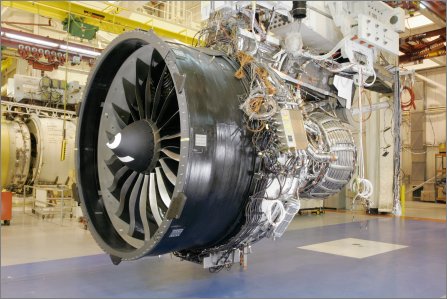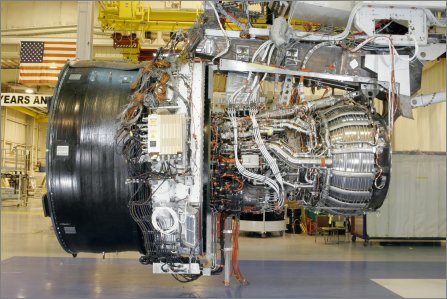General Electric (GE) started up the new generation GEnx turbofan for the first time on Sunday at its Peebles test site in Ohio.
The engine maker says the GEnx, which is in development for the Boeing 787, 747-8 and Airbus A350, ran at idle thrust setting at first but “was getting close to max thrust” during subsequent runs on Monday.
|
Initial tests are focused on the GEnx variant for the 787, with flight tests on GE’s 747-100 flying testbed targeted for the third quarter of 2006. The engine is scheduled to begin flight tests on the 787 around a year later. The first runs of the GEnx come some five weeks after the initial run of the competing Rolls-Royce Trent 1000 which was started for the first time on 14 February.
|
The GEnx-72A1 variant of the engine, originally kick-started into development as the GEnx-54/64 and -70B1 series for the 787, is due to enter service on the A350 in 2010, two years behind the Boeing twinjet. First engine test for the A350 variant is set for late 2007 and US certification is targeted for early 2009.
Assembly of the first GEnx engine for the 787 started last November, and work is now underway to complete a further nine engines assigned to the initial certification programmes for the two twin-engined applications.
Seven are for the initial bleedless Boeing application covering three variants – the GEnx-54B for the 787-3, the -64B for the 787-8 and the -70B for the 787-9. Three are for the bleed-enabled -72A1 version for the A350-800/900.
The first run of the GEnx for the 747-8 is targeted for the third quarter of 2007, with entry-into-service on the freight version set for around August 2009. Fan diameter for the 747-8 variant will be slightly smaller at 2.64m (104in) versus the 2.82m fan of the 787 version, and the engine is adapted to produce bleed air. Other than the bleed ducts, the core will be identical to the 787 GEnx.
The engine will also incorporate changes to the low pressure (LP) turbine which will have six stages, one fewer than the 787 version, while the LP compressor will also be cut by one stage to three. The engine will be rated at 66,500lb (296kN) thrust, against the higher 75,000lb thrust capability of the 787 engine variant.
Rolls-Royce is aiming to achieve engine certification for the Trent 1000 in mid-2007 while entry into service, with 787 launch customer All Nippon Airways, is scheduled for mid-2008. The Trent 1000 programme includes seven engines in the ground-test effort, and an eighth for service reliability work as part of Boeing's target of achieving 330min extended twin operations (ETOPS) clearance at entry into service.
A further nine engines will be allocated to Boeing for flight tests, with the first shipset due to be delivered to the manufacturer's Everett, Washington site in February 2007.
GUY NORRIS / LOS ANGELES
Source: Flight International





















